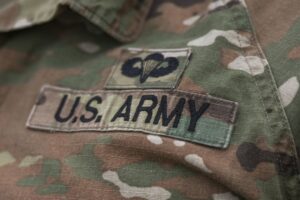If you want to polarize a conversation in a room of young adults, bring up compulsory military service – the draft. The arguments for and against will be plenty. Those in favor generally suggest that serving the country should involve all of society – from the poor through the wealthy – and not be limited to only those who volunteer. But how would the Department of Defense grow its force structure to meet the demands of a major conflict with volunteers only?
Military Draft – the Answer to Recruiting Shortfalls?
It’s no secret the US military is not meeting recruiting goals. Lowering or modifying the education, skills, and physical standards have been options, but that course of action would significantly imperil the readiness of the force. Keeping standards high to ensure a capable military could lead to a smaller but effective combat-ready joint force. Moving away from the last 50 years of voluntary service would significantly disturb American sociological status quo.
Volunteers tend to be singular in purpose, with a genuine desire to serve the country, or be driven to the decision by a lean job market. Those prompted by the latter often find the military to their liking and make it a career. The advocates for a strictly all-volunteer military, as is the case today, would claim the ideal military member wants to be in the US armed forces, meets the physical standards, and has the skills and education to be successful. Additionally, the willingness of the military services to provide training in skills marketable in the private sector entices those with aptitudes for specialized technical jobs in the military. But there is a downside. With service training, members are now marketable in the commercial world, where pay is higher.
The result is a force structure that may not be able to face China or Russia or, worse, a Moscow-Beijing threat. In 1973, when the United States went to the all-volunteer military, the thinking was, should the United States need to surge its numbers of combat troops, calling up the Individual Ready Reserve made up of former active-duty and reserve military in a semi-state of readiness would be possible. But over the last half-century, that approach has faded. In The US Army War College Quarterly: Parameters article “A Call to Action: Lessons From Ukraine for the Future Force,” writers US Army Lt. Col. Katie Crombe and Dr. John A. Nagl, professor of warfighting studies at the US Army War College, explained:
“The Individual Ready Reserve, which stood at 700,000 in 1973 and 450,000 in 1994, now stands at 76,000. These numbers cannot fill the existing gaps in the active force, let alone any casualty replacement or expansion during a large-scale combat operation. The implication is that the 1970s concept of an all-volunteer force has outlived its shelf life and does not align with the current operating environment.”

(Photo by Artur Widak/NurPhoto via Getty Images)
Despite the effectiveness of the Department of Defense to benefit from the willingness of Americans to serve in the military since the elimination of the draft, surging the number of troops may prove a problem. “Large-scale combat operations troop requirements may well require a reconceptualization of the 1970s and 1980s volunteer force and a move toward partial conscription,” Crombe and Nagl concluded.
Ukraine War Raises US Force Structure Questions
The unprovoked Russian invasion of Ukraine has raised warfighting issues some thought relegated to the past. Once again, large-scale battlefield engagements with significant casualties are what US military planners are seeing. However, once again instituting the draft to meet the demands of a Ukraine-like combat environment is not a trivial undertaking. Still, the discussion on bringing back the draft is real. If not a fully implemented version, some hybrid idea was recommended in Military.com by Ret. Marine Lt. Col. Joe Plenzler, strategic adviser to Marine Corps commandants:
“Instead of an ‘either an all-volunteer force or a fully conscripted force’ model, I propose a both-and solution. We should have our military recruiters sign up new troops for 11 months out of the year, and then have the Selective Service draft the delta between the military’s needs and the total number recruited.”
How this would work in practice would need to be resolved. In an Army War College War Room podcast, participants discussed the administrative mechanics of re-establishing conscription. Before the first draftee took the oath of service, it would take 193 days and congressional approval. With the rapid pace of a near-peer large-scale combat operation with Russia or China, quickly increasing the effective end strength would be challenging. At best, the military would be replenishing combat losses in the first months of such a conflict.
US national security leadership must recognize and address the need for a ready military on demand. Current recruiting woes warrant the realization that existing force structure may not be sufficient. If not the draft, what will it be?

